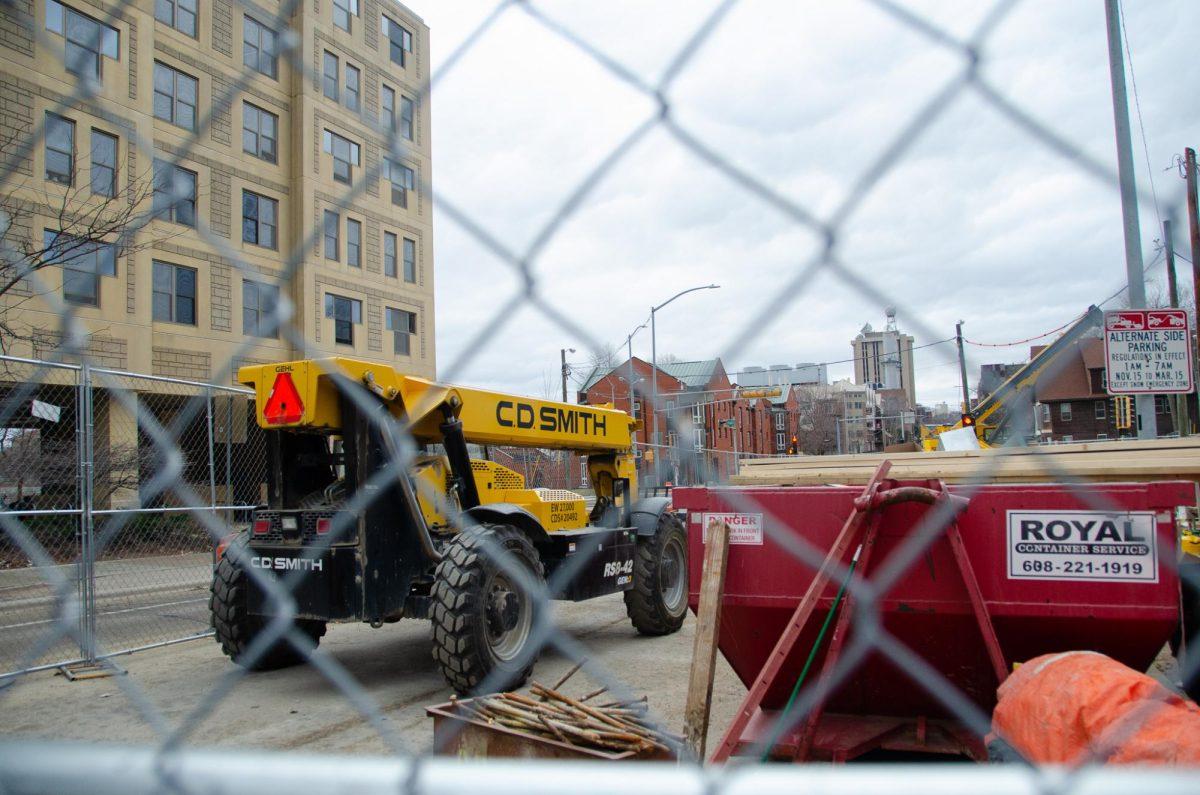The Dane County Jail Consolidation Project has raised the prospect of building a new county jail. The $176 million project aims to consolidate the current jail system into a single facility, reduce solitary confinement, refashion cell blocks, provide space dedicated to medical and mental health services, reduce the overall jail population and more.
An outline of jail consolidation planning also cites intentions of incorporating maximal natural light, open spaces and biophilic design implementations as a method of making the jail visibly less institutional.
Sheriff Kalvin Barrett endorses the construction of a new jail building as a means of enacting prison reform in the county by reducing the volume of incarcerated people. The new, six-story facility would result in the closure of the Ferris Huber Center and the City-County Building jail whilst ultimately pruning jail capacity to 825 beds in total.
Homeowners dispute zoning ordinance effects on historic districts
While the current jail consolidation plan will dramatically transform the terribly bleak conditions of Dane County jails as they presently exist, the plan itself is $13.5 million over budget. Even when disregarding the price tag, these strides are simply not the promised prison reform they have been made out to be.
Last August, members of the Dane County Board of Supervisors Black Caucus presented a resolution that allocated project funding to constructing a smaller jail while simultaneously investing in true reform efforts without treading beyond budgetary limits.
The alternative plans by the Black Caucus served as a compromise that proposed a five-story jail with 725 beds, maintenance of in-person visitation, hosting weekend court in the county, devising jail alternatives for minors, limiting probationary holds, refining cash bail practices, developing a comprehensive and transparent reporting system to identify areas of growth in the realm of criminal justice and investing $500,000 in criminal justice reform services.
Restorative programming and smaller jail capacities, as proposed by the Black Caucus, would address racial disparities in the carceral system head-on. Prioritizing reform is critical, as Black people in Dane County are incarcerated at a rate that doubles the national average.
Unfortunately, these alternative plans were vetoed by County Executive Joe Parisi and have been minimized and described as unsustainable by Sheriff Kalvin Barrett.
The Black Caucus has criticized Barrett’s assertions that the six-story jail building would serve to benefit the broader community and end cycles of incarceration.
“I am frankly disgusted that it’s easy for folks to make arguments and vote for giving more money to Mead & Hunt to draw up a plan for a larger jail, than to focus, address, and break down the systemic racism that is ingrained in our current system,” Dane County Supervisor and Black Caucus member April Kigeya said.
A smaller jail facility would not only come with lower operating expenses, but it would lend itself to decreasing overall incarceration rates by reallocating available funding to much-needed resources in the county such as affordable housing and policing alternatives such as CARES. Moving forward with the larger facility is a costly mistake that only serves to perpetuate racial disparities in Dane County.
Examining present systemic disparities offers a number of critical implications for addressing the debates over jail consolidation options.
The nation touts one of the largest prison populations in the world, with 1 out of every 5 people imprisoned in the world being incarcerated in the United States. Thirty-eight percent of incarcerated people in the nation are Black. In Wisconsin, 42% of incarcerated individuals are Black — a figure that supplants the percentage of Black citizens residing in the state by seven times.
The maintenance of carceral facilities and the enforcement of surveillance in the U.S. is extractive by nature. The prison-industrial-complex caters to deep-seated white supremacy and unfounded notions of aberrancy. Racist rhetoric sublimates ideas of what is and what is not crime, ultimately targeting oppressed communities and drawing in massive profits for the government and a number of industrial entities. Incarcerated individuals are subjected to violence, labor exploitation and inhumane living conditions on a daily basis.
Tony-Award-winning musical ‘Hadestown’ at Overture this week
The fact that many states even have prison occupancy quotas speaks directly to how fiscal interests have long been prioritized over rehabilitation and carceral diversion practices. U.S. carceral facilities draw profits and source cheap labor, and that only incentivizes the continuance of mass incarceration.
American jurisprudence is deeply flawed and rests on the assumption that punishment equals justice. Taking up a praxis of abolition to squash half-baked retributive concepts of “justice,” is a necessary measure. Defunding the police, eliminating carceral structures and redistributing funding to meet community needs and foster rehabilitative practices should be prioritized first and foremost.
As details for the future of Dane County’s carceral system are solidified, consider the generative and beneficial possibilities that emerge in tandem with abolition. It makes much more sense to enact a methodological overhaul of justice systems and replace punitive measures with programs that provide support to individuals struggling with mental illness, substance use disorders, homelessness and poverty than it does to isolate and traumatize criminalized populations. Human dignity and equity should be at the center of all county efforts, and working toward eliminating jail facilities altogether is an important step toward liberation.
Katie Sullivan ([email protected]) is a sophomore studying health promotion and equity and linguistics.





















